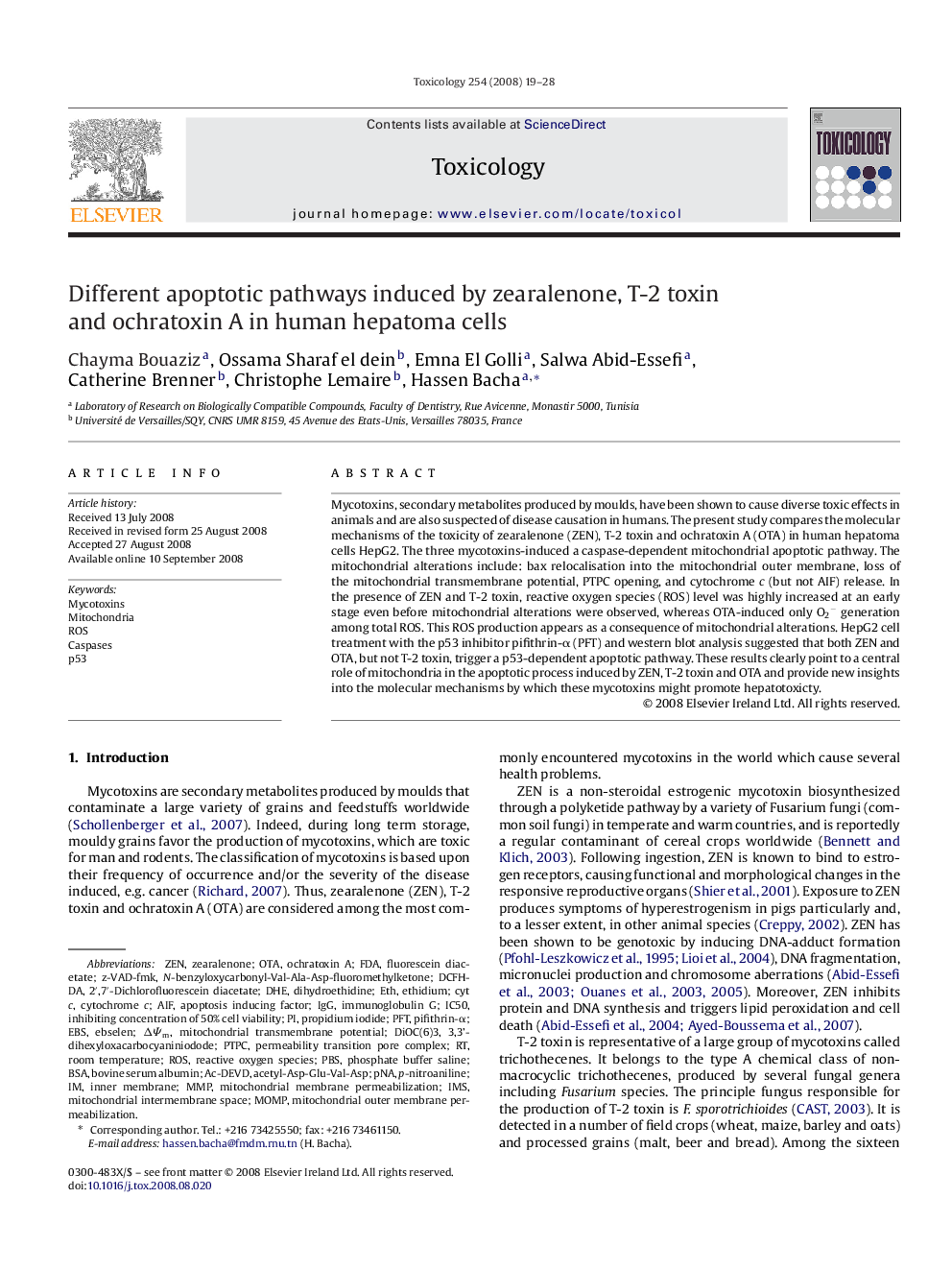| Article ID | Journal | Published Year | Pages | File Type |
|---|---|---|---|---|
| 2596941 | Toxicology | 2008 | 10 Pages |
Mycotoxins, secondary metabolites produced by moulds, have been shown to cause diverse toxic effects in animals and are also suspected of disease causation in humans. The present study compares the molecular mechanisms of the toxicity of zearalenone (ZEN), T-2 toxin and ochratoxin A (OTA) in human hepatoma cells HepG2. The three mycotoxins-induced a caspase-dependent mitochondrial apoptotic pathway. The mitochondrial alterations include: bax relocalisation into the mitochondrial outer membrane, loss of the mitochondrial transmembrane potential, PTPC opening, and cytochrome c (but not AIF) release. In the presence of ZEN and T-2 toxin, reactive oxygen species (ROS) level was highly increased at an early stage even before mitochondrial alterations were observed, whereas OTA-induced only O2− generation among total ROS. This ROS production appears as a consequence of mitochondrial alterations. HepG2 cell treatment with the p53 inhibitor pifithrin-α (PFT) and western blot analysis suggested that both ZEN and OTA, but not T-2 toxin, trigger a p53-dependent apoptotic pathway. These results clearly point to a central role of mitochondria in the apoptotic process induced by ZEN, T-2 toxin and OTA and provide new insights into the molecular mechanisms by which these mycotoxins might promote hepatotoxicty.
